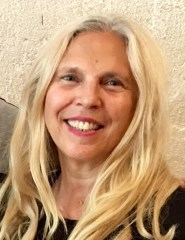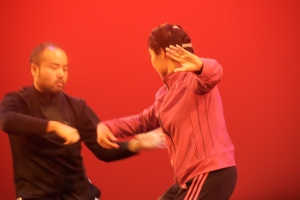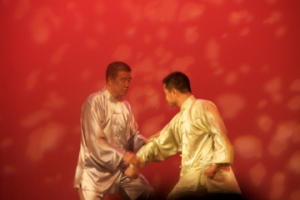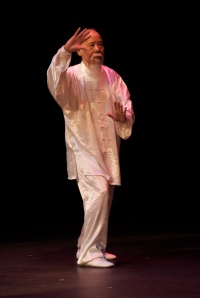 Anti-aging is a big buzzword these days. Everyone wants to know the secret of youth. What can I buy, ingest, or do to stay young and healthy?
Anti-aging is a big buzzword these days. Everyone wants to know the secret of youth. What can I buy, ingest, or do to stay young and healthy?
As a 39-year practitioner of Taoist health and spiritual practices, I am here to tell you that Taoism is the way to go!
Taoist teachings are the root of Chinese Medicine, Feng Shui, Martial Arts, and Astrology. These disciplines are all concerned with Chi (or Qi) – life force energy – its flow, harmony, and balance.
This ancient tradition also developed the practices known as Qigong or Daoyin that emphasize the cultivation of good health with the intention of living a long, productive life. One accomplishes this by finding internal balance and merging with nature, exchanging energy with the universe in a dynamic process, living in the flow between heaven and earth.
When I committed to my Tai Chi practice 39 years ago, I was a professional photographer with a lot of minor health problems related to my profession that threatened to become serious.
Only 27, I was a bit of a mess. My shoulders had crept up to my ears; I had energy congestion between my eyes that came from peering at the world through a camera; and imbalances and compression in my spine from carrying equipment and heavy camera bags. Not to mention stress and anxiety.
Someone mentioned Tai Chi to me and I decided to give it a shot. After a few classes, I felt an immediate connection with this amazing movement art that is Taoism in motion.
My growing commitment to practicing the Taoist philosophy through the disciplines of Tai Chi and Qigong improved my life enormously, enhanced my health and happiness, and became the context for many of my subsequent life decisions.
In my experience, these practices have proven to be incredibly valuable and perfect for our busy lifestyles.
Although there are many things I could share with you from this vast and varied tradition, here are 3 simple practices rooted in Taoism that I recommend doing on a daily basis to maintain your health and keep you young and energetic:
1. Meditate – Develop a relationship with yourself through meditation. In Tao practice, we begin with The Inner Smile. Send love, joy, happiness, and intention for healing to your inner organs. Know their location and make a connection with them. See your inner organs as a team or family that needs to work harmoniously together in order to support you. Cultivate their happiness and chi.
2. Self-Massage – Stimulate chi flow in your organs by learning Chi Self-Massage. Start with your sense organs. They are the doorways to your inner organs and problems there often indicate internal issues. If nothing else, rub your ears every day and massage around your navel center, easing away congestion and stagnant energy and making space for your chi to flow.
3. Gather Universal Chi Through Your Energy Gates – the 2 palm centers, 2 centers in the soles of the feet, mid-eyebrow, and crown center, bringing energy into your body from heaven and earth for nourishment and healing. Take time to move consciously and if at all possible, do this outdoors and breathe deeply. It’s very easy to use our energy. Not as easy to conserve it and cultivate it. Think of yourself as a battery that needs charging and connect every day to the universal forces for nourishment the same way you charge your cellphone.
Remember that Tao practices do not provide a magic pill that changes things all at once. Rather, they are about refining and cultivating your energy for the long-term. Try it and watch the magic happen! For more information about classes, workshops, and private sessions, visit me at www.taosharon.com










